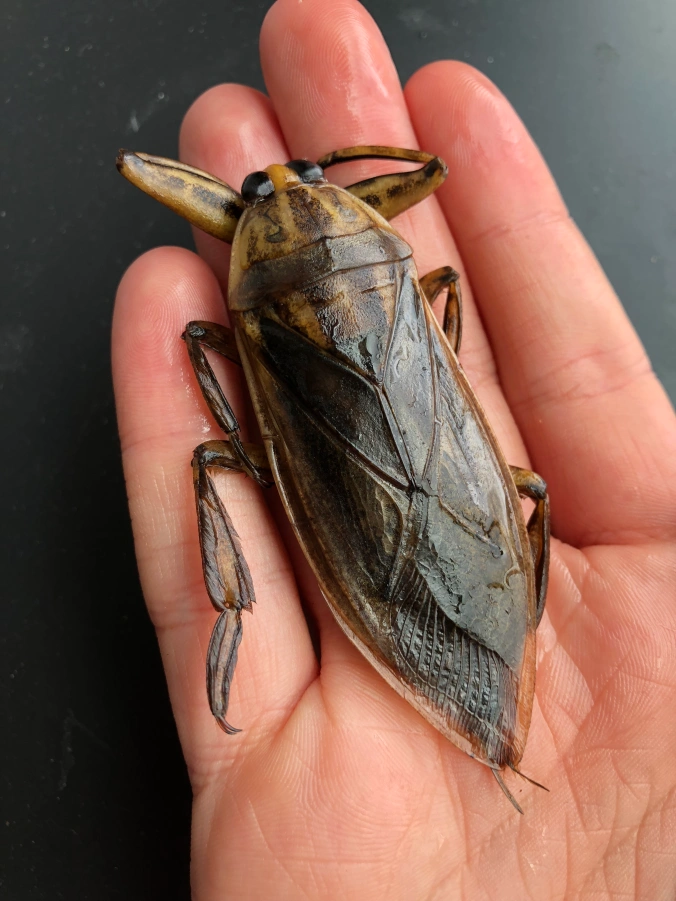
Let’s be honest. Besides two extra pairs of legs, is there any real difference between eating an aquatic insect and eating an aquatic crustacean? If you can eat a shrimp, a crab, or a lobster, why not a giant water bug?
I’m not talking about the Oriental cockroach (Blatta orientalis), nicknamed “water bug” in the United States, but the genuine article, genus Lethocerus. Closer to cicadas than roaches, giant water bugs are classified as “true bugs,” and are also truly aquatic. Except for the occasional mating flight, their lives are spent submerged in fresh water, breathing through a natural snorkel and spearing prey with a natural harpoon. Some species grow to nearly five inches, large enough to prey on vertebrates like fish, frogs and baby turtles. Their syringe-like proboscis can deliver a nasty sting to a human being; though not nasty enough to keep that vertebrate from preying on them in turn.
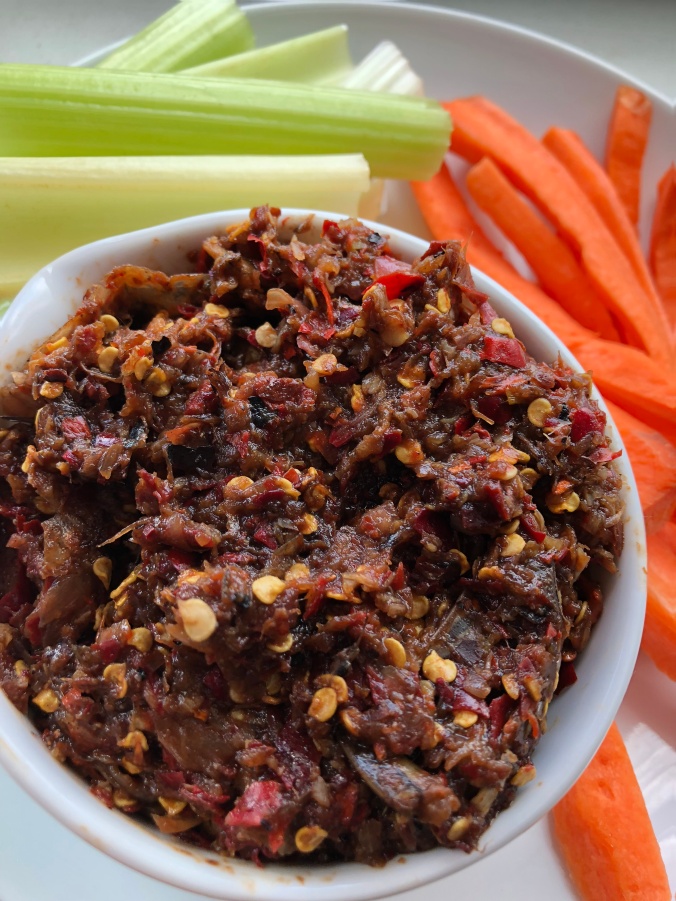
You’d never know one of the main ingredients in this dish is a giant insect. Right?
Water bugs of the species Lethocerus indicus are a regional delicacy in Southeast Asia, eaten in parts of the Philippines, Laos, Cambodia, Thailand and Vietnam. Thailand is probably the country that makes the widest culinary use of the insect, locally called แมงดา, mang da (mang sounds like meng).* It’s even entered slang as part of the rich Thai vocabulary for animal insults: pimps are called mang da because of a shared tendency to buzz around street-lamps by night.

These defrosted mang da have been dipped in warm water to remove the salt they were packed in. You can smell the musk already.
In Thai cuisine, the larger female mang da are cooked and eaten whole. The smaller males, awash in fragrant pheromones, are ground up with chilis and garlic to make a kind of nam prik, spicy relish that is spooned onto mild ingredients like raw vegetables. So what do the bugs taste like? A little like shrimp, of course. But mostly, like nothing else in the world. The flavor of the male bugs’ mating hormones is so distinct it can be captured and bottled as a colorless mang da “essence,” or even synthesized artificially.
Ever since I first learned about mang da and its essence, I was entranced. I blame all those hours I spent as a kid playing Morrowind, a game in which you can temporarily boost your personality by swigging a rare and valuable potion called Telvanni bug musk. Determined for the past several years to taste water bugs for myself, I’ve searched Asian markets, badgered Thai and Vietnamese foodies, and gone bug-hunting among the street-food stalls of Saigon; all to no avail. I always had so much trouble acquiring bug musk in Morrowind; was I doomed to the same fate in real life?
When I walked into a small grocery store called 3 Aunties Thai Market in Woodside, Queens, I wasn’t expecting to find mang da specifically, but I looked for it, as I always do in stores with a lot of Thai products. To my great surprise, I found nam prik mang da sitting discretely among other types of chili sauce. It was made with artificial Telvanni bug musk water bug essence. “Oh well,” I thought. “That’s the closest I’ll get to the real thing without going to Thailand. I’d better buy it.”
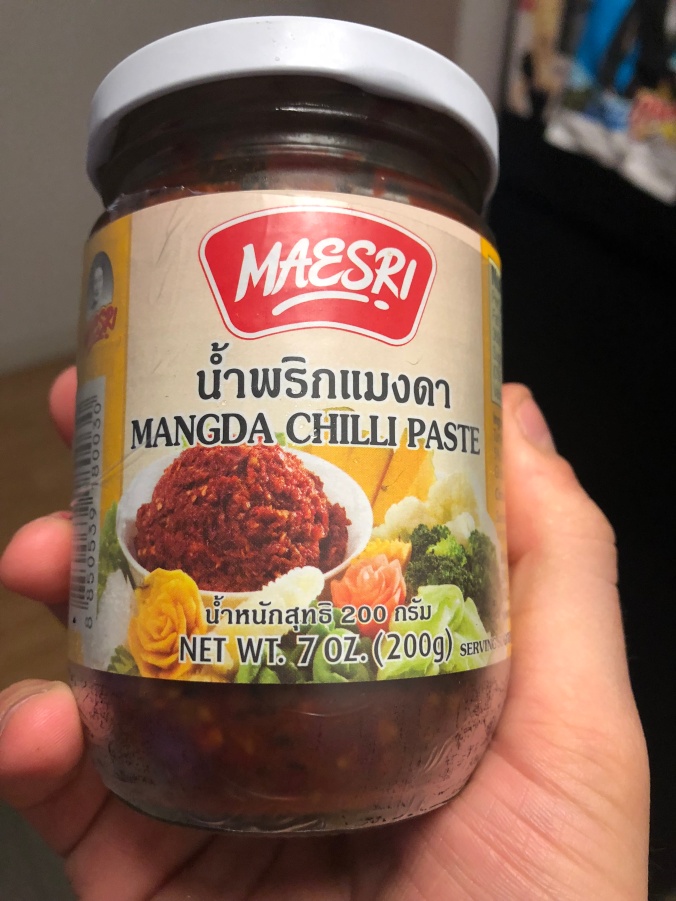
น้ำพริกแมงดา (nam prik mang da). Because of the slang meaning of mang da, if you run this into Google Translate it comes out as “chili pimp.”
The young cashier gave me a concerned look when I placed the jar in front of her. “Do you know what this is?” she asked. I nodded. “It’s a giant insect, right? But this is artificial.” In a few words I tried to summarize my obsession and my long, fruitless water bug search. She laughed. “Do you want them? I have them frozen.”
My eyes grew wide as the woman dug deep into the freezer, reaching under packages of fish, ice cream and silkworm pupae before finally pulling out a small Styrofoam container of what were unmistakably whole mang da. Even after that, she seemed surprised and amused when I wanted to actually purchase the insects ($3.50). I told her I had heard the flavor is very unique, and she agreed.
At home, I tasted the artificial nam prik mang da on sliced raw veggies such as carrot, celery, cucumber and Thai eggplant. Later, I used the real bugs to make nam prik mang da from scratch.

Note that the package is labelled “Not for human consumption,” but includes nutrition facts…..
THE RECIPE
I was unable to find a written recipe for nam prik mang da in English online. By searching for it in Thai (น้ำพริกแมงดา), I found the video below:
Lacking some of the ingredients used in the video, I followed the ingredients of the artificial nam prik mang da more closely. I also roasted the garlic, chilis and shallots before mashing them, following a suggestion from this and other nam prik recipes online.
- 4 whole giant water bugs (mang da), gently rinsed, wings removed
- 8 cloves of garlic, roasted until soft and fragrant
- 1 European shallot, or 4-6 tiny Thai shallots, roasted with the garlic
- 1 cup dried chili peppers, gently toasted (Thai bird chilies or other small red chili)
- 2 teaspoons tamarind concentrate
- 1 1/2 tablespoons fermented shrimp paste (Various forms of shrimp paste can be found in Asian markets. Thai kapi is most authentic, but I used the similar Korean saeu-jeot. Some chefs roast kapi first to release its flavor.)
- 1 1/2 tablespoons water
- 1 tablespoon sugar
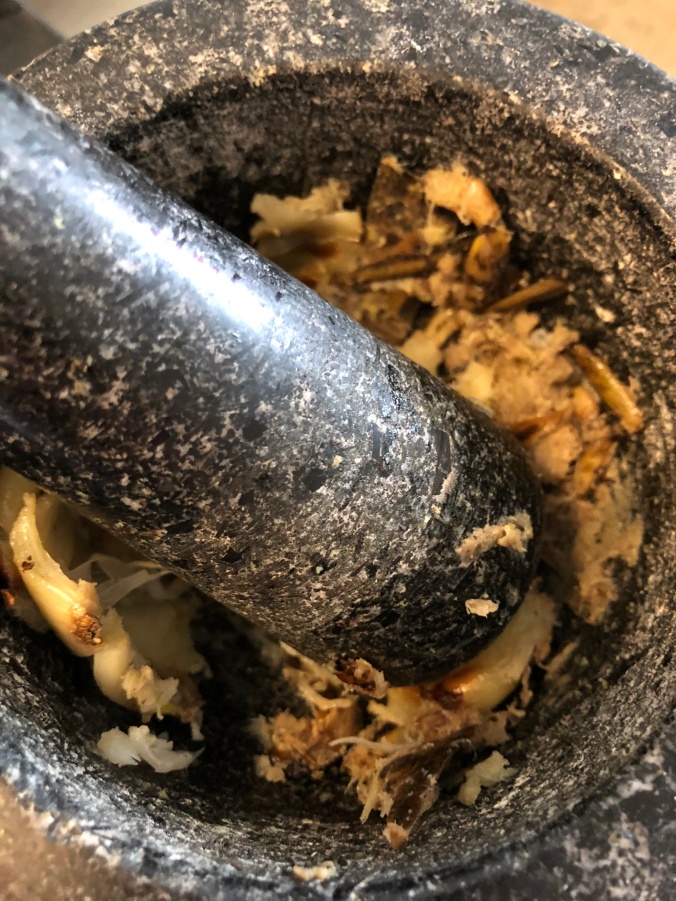
Above: water bug and garlic.
Combine all the ingredients in a mortar and pestle or food processor and blend into a thick paste: first the water bugs, then the garlic and shallots, then the chilies, then the other ingredients.
Serve as a topping for morsels of meat, fish or vegetables, with or without jasmine rice.
THE VERDICT
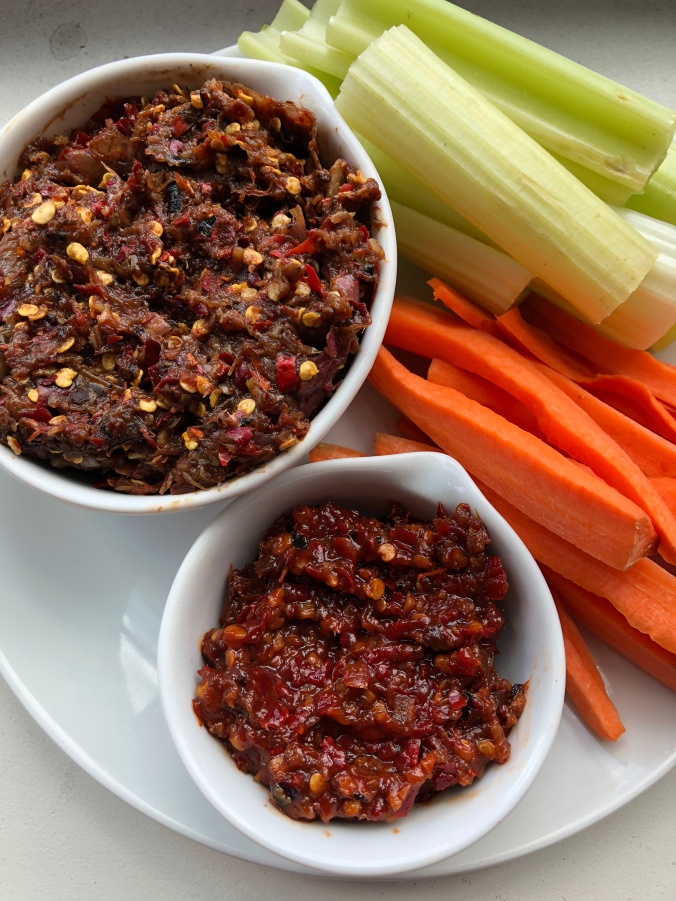
Top: homemade nam prik mang da made with real water bugs. Bottom: store-bought made with artificial bug essence. Did I mention that the Morrowind bug musk is actually described as “a dark, red-brown paste”?
I’ve heard that mang da essence is so powerful it has to be added to dishes as a droplet on the end of a toothpick. The store-bought nam prik contains only 1% essence, but it permeated my nostrils from the moment I opened the jar. I could feel it in my nose and mouth, like alcohol or the powerful musk of a stink bug, which it probably shares more than a few molecules with. The Greek poet Sappho described her love for another woman not as bittersweet but “sweetbitter” (glukúpikron). That’s how I would describe the initial scent of mang da: sweetbitter.
And it smells exactly how it tastes. There are two competing flavors, as though you had decided to eat two different jellybeans together: one fruit, one licorice. I was reminded of sweet anise or tarragon on the one hand, pear or green apple on the other. The flavor seems to linger with a hint of a cooling sensation, like mint or Szechuan pepper.
Of the two water bug chili sauces, the store-bought has a more overpowering flavor of water bug, perhaps to be expected from an artificial extract. The store-bought nam prik is also softer, redder and much sweeter than the homemade, even after I added sugar. In my opinion the sugar isn’t necessary, since mang da has a lot of sweetness on its own. Amplified with garlic and chilies, it is flowery, insistent, incongruous. Triumphant.
Homer wrote that ambrosia, the edible perfume of the gods, sprang from the earth and was carried to Olympus by doves. Perhaps this was a clerical error, and he meant to say “giant water bugs.”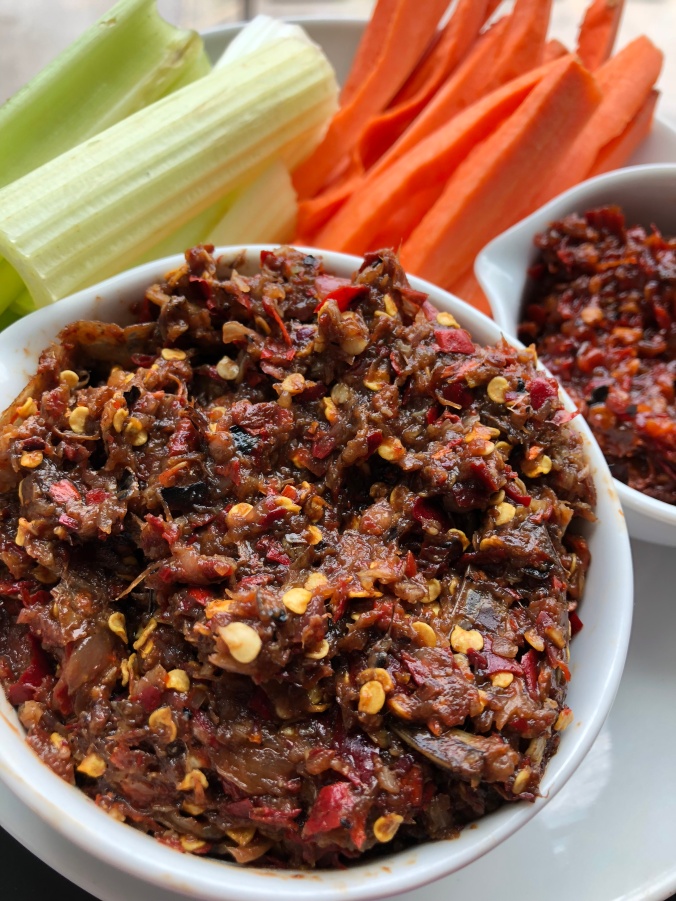
* You may find แมงดา transliterated mangda or maeng da (which to my eyes is closest to the actual pronunciation), but mang da is the most common. The word can also mean horseshoe crab, another quirky invertebrate eaten in Thailand.
You must be logged in to post a comment.